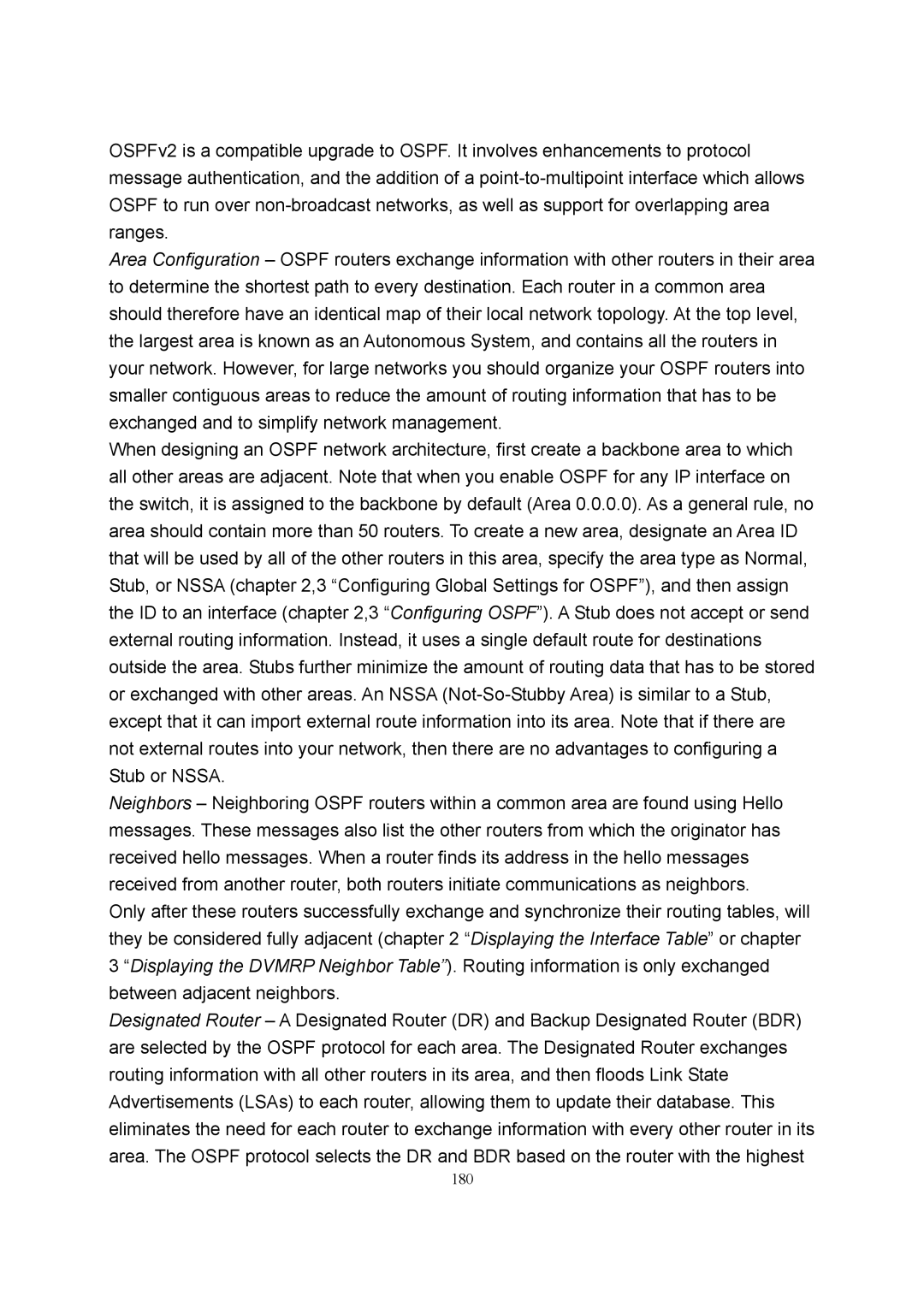OSPFv2 is a compatible upgrade to OSPF. It involves enhancements to protocol message authentication, and the addition of a
Area Configuration – OSPF routers exchange information with other routers in their area to determine the shortest path to every destination. Each router in a common area should therefore have an identical map of their local network topology. At the top level, the largest area is known as an Autonomous System, and contains all the routers in your network. However, for large networks you should organize your OSPF routers into smaller contiguous areas to reduce the amount of routing information that has to be exchanged and to simplify network management.
When designing an OSPF network architecture, first create a backbone area to which all other areas are adjacent. Note that when you enable OSPF for any IP interface on the switch, it is assigned to the backbone by default (Area 0.0.0.0). As a general rule, no area should contain more than 50 routers. To create a new area, designate an Area ID that will be used by all of the other routers in this area, specify the area type as Normal, Stub, or NSSA (chapter 2,3 “Configuring Global Settings for OSPF”), and then assign the ID to an interface (chapter 2,3 “Configuring OSPF”). A Stub does not accept or send external routing information. Instead, it uses a single default route for destinations outside the area. Stubs further minimize the amount of routing data that has to be stored or exchanged with other areas. An NSSA
Neighbors – Neighboring OSPF routers within a common area are found using Hello messages. These messages also list the other routers from which the originator has received hello messages. When a router finds its address in the hello messages received from another router, both routers initiate communications as neighbors.
Only after these routers successfully exchange and synchronize their routing tables, will they be considered fully adjacent (chapter 2 “Displaying the Interface Table” or chapter 3 “Displaying the DVMRP Neighbor Table”). Routing information is only exchanged between adjacent neighbors.
Designated Router – A Designated Router (DR) and Backup Designated Router (BDR) are selected by the OSPF protocol for each area. The Designated Router exchanges routing information with all other routers in its area, and then floods Link State Advertisements (LSAs) to each router, allowing them to update their database. This eliminates the need for each router to exchange information with every other router in its area. The OSPF protocol selects the DR and BDR based on the router with the highest
